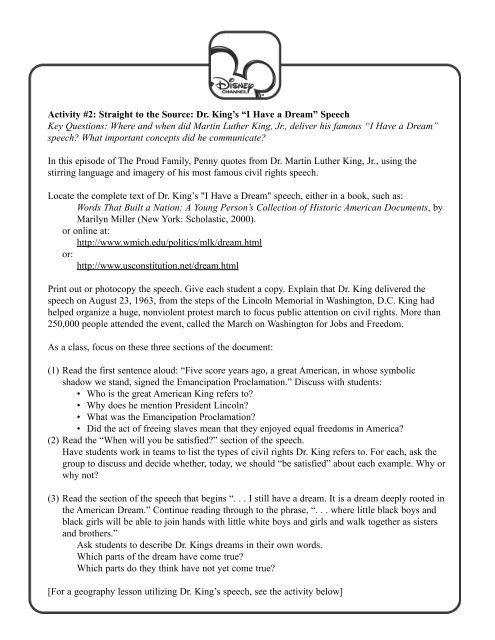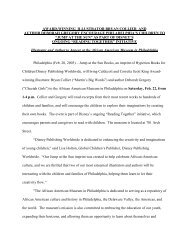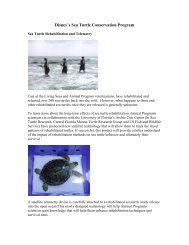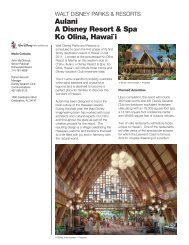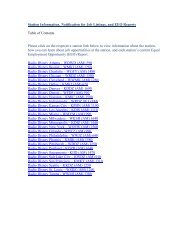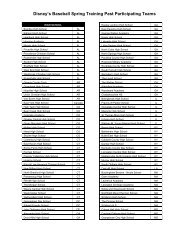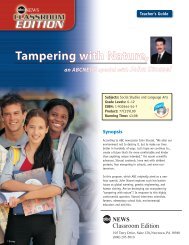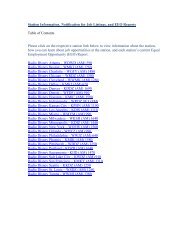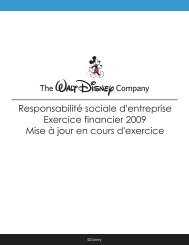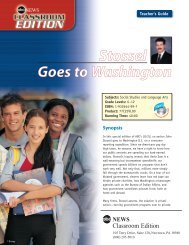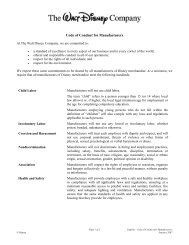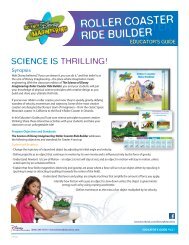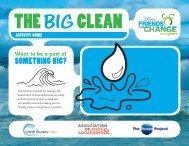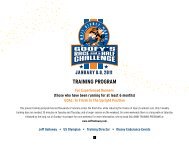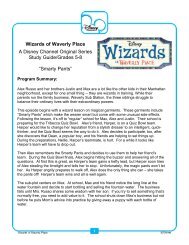The Proud Family: âI Had a Dreamâ A Disney Channel Episode for ...
The Proud Family: âI Had a Dreamâ A Disney Channel Episode for ...
The Proud Family: âI Had a Dreamâ A Disney Channel Episode for ...
Create successful ePaper yourself
Turn your PDF publications into a flip-book with our unique Google optimized e-Paper software.
Activity #2: Straight to the Source: Dr. King’s “I Have a Dream” SpeechKey Questions: Where and when did Martin Luther King, Jr., deliver his famous “I Have a Dream”speech? What important concepts did he communicate?In this episode of <strong>The</strong> <strong>Proud</strong> <strong>Family</strong>, Penny quotes from Dr. Martin Luther King, Jr., using thestirring language and imagery of his most famous civil rights speech.Locate the complete text of Dr. King’s "I Have a Dream" speech, either in a book, such as:Words That Built a Nation: A Young Person’s Collection of Historic American Documents, byMarilyn Miller (New York: Scholastic, 2000).or online at:http://www.wmich.edu/politics/mlk/dream.htmlor:http://www.usconstitution.net/dream.htmlPrint out or photocopy the speech. Give each student a copy. Explain that Dr. King delivered thespeech on August 23, 1963, from the steps of the Lincoln Memorial in Washington, D.C. King hadhelped organize a huge, nonviolent protest march to focus public attention on civil rights. More than250,000 people attended the event, called the March on Washington <strong>for</strong> Jobs and Freedom.As a class, focus on these three sections of the document:(1) Read the first sentence aloud: “Five score years ago, a great American, in whose symbolicshadow we stand, signed the Emancipation Proclamation.” Discuss with students:• Who is the great American King refers to?• Why does he mention President Lincoln?• What was the Emancipation Proclamation?• Did the act of freeing slaves mean that they enjoyed equal freedoms in America?(2) Read the “When will you be satisfied?” section of the speech.Have students work in teams to list the types of civil rights Dr. King refers to. For each, ask thegroup to discuss and decide whether, today, we should “be satisfied” about each example. Why orwhy not?(3) Read the section of the speech that begins “. . . I still have a dream. It is a dream deeply rooted inthe American Dream.” Continue reading through to the phrase, “. . . where little black boys andblack girls will be able to join hands with little white boys and girls and walk together as sistersand brothers.”Ask students to describe Dr. Kings dreams in their own words.Which parts of the dream have come true?Which parts do they think have not yet come true?[For a geography lesson utilizing Dr. King’s speech, see the activity below]


